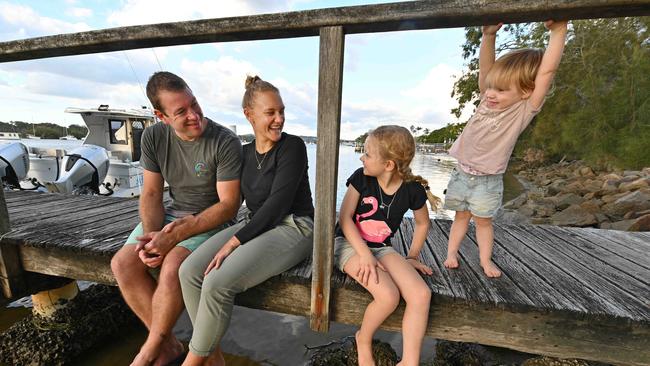Queensland budget: Population boom to put pressure on property, services
The boom in interstate migration is expected to boost the state’s economy but place pressure on the competitive property market.

Queensland’s population surge, driven by interstate migration, will boost the state’s economy but put pressure on the competitive property market and strapped public health system.
Queensland is experiencing its biggest population boom since 2004 after an extra 30,000 people moved to the state during 2020.
Western Australia had the second-highest net migration last year, gaining 1385 residents.
More than 12,700 residents left Victoria in 2020 while NSW lost 18,800 people.
Queensland’s budget on Tuesday says the warm climate, competitive taxation rates and relative housing affordability had driven interstate migration.
But moving to Queensland comes at a price, with a $78.75 interstate driver’s license transfer fee unveiled in the budget.
The average Queenslander paid $2743 in state tax last year compared with $3821 in NSW and $3504 in Victoria.
Brisbane’s median property price as at May was $574,572, about 41 per cent below that in Sydney ($970,355) and 22 per cent below Melbourne ($740,562), the budget papers say.
Pandemic lockdowns in the Hackett family’s home city of Melbourne made them fast-track their plans to move north to Queensland’s Sunshine Coast.
They craved a lifestyle change, with Joe Hackett finding he was too overworked as part-owner of a building business.
Now he works remotely, allowing him and wife Simone to take up surfing.
The young family often ride their bikes to the beach from their new home at Tewantin, near Noosa, with daughter’s Amelia and Zara, aged 7 and 2, in tow. “We’ve basically been head down, bum up for the last 10 years getting the business up and running and then sustaining it,” Mr Hackett said.
“We sort of just decided that it was time to make a change for our lifestyle and try to create a different life for our daughters while they are still young in a different place, different climate and with the opportunity to spend a lot more time outdoors.”
Treasurer Cameron Dick said lowering the state’s stubbornly high jobless rate would be challenging, with other states “exporting part of their unemployment to Queensland”.
“For our government, migration presents a challenge – and an opportunity,” he said.
“We must still provide jobs for Queenslanders graduating from school or completing training, but we must also provide jobs for tens of thousands of interstate migrants over the next four years.”
Queensland’s health system is also already under pressure, with too few beds to cope with the number of patients flocking to public hospitals.
State budget figures are predicated on Queensland’s border remaining “mostly open” to other states, no major community outbreaks of Covid-19 and that the Reserve Bank of Australia keeps interest rates at 0.1 per cent until mid-2023.



To join the conversation, please log in. Don't have an account? Register
Join the conversation, you are commenting as Logout